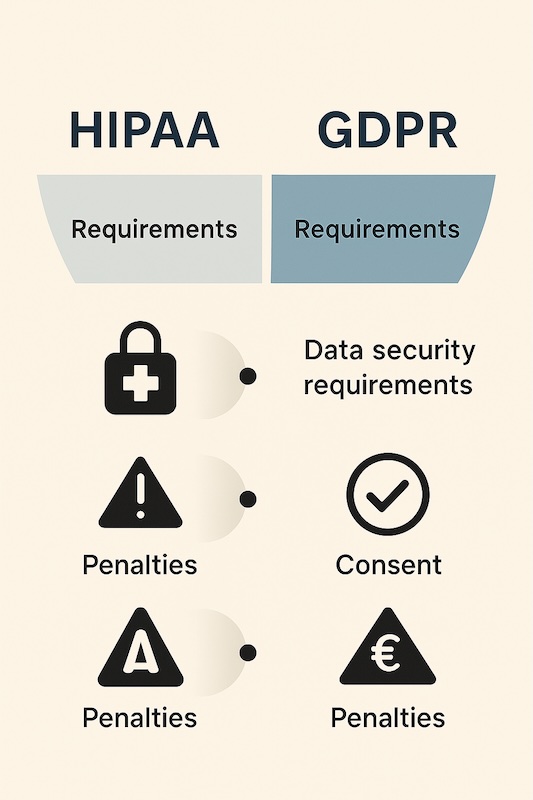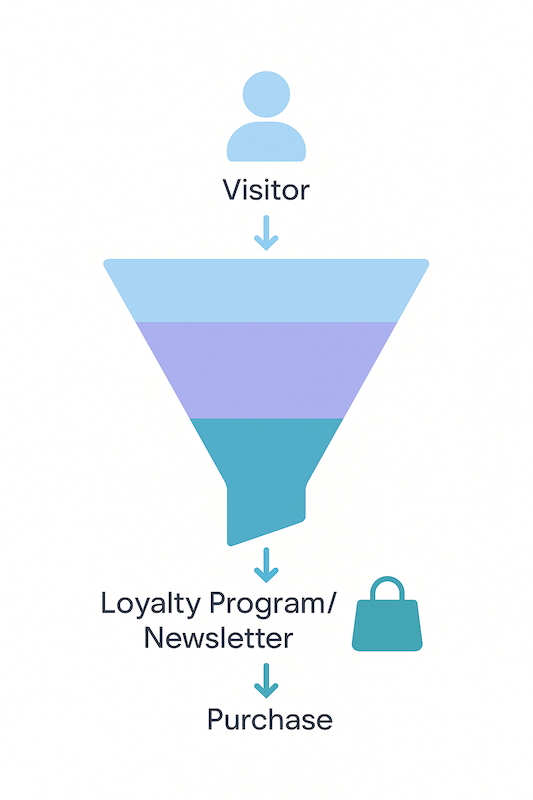What “Cookieless” Means in Practice
Third‑party cookies are being phased out across major browsers, though with different approaches. Safari and Firefox have already implemented significant restrictions on third-party cookies. Google initially planned to remove third-party cookies from Chrome entirely, but in July 2024 announced a shift in strategy—instead of eliminating them completely, Chrome will introduce enhanced user choice, allowing individuals to make informed decisions about cookie usage across their browsing experience. First‑party cookies, which belong to the site owner, remain unaffected across all browsers.
- With restricted or limited third‑party cookies, behavioural targeting and retargeting lose precision, though the impact varies by browser and user settings.
- GDPR and CCPA impose transparency and consent requirements.
- Ad blockers and privacy extensions limit the effectiveness of client‑side scripts.
The timeline for these changes continues to evolve. While Safari’s Intelligent Tracking Prevention and Firefox’s Enhanced Tracking Protection are already active, Chrome’s approach now focuses on giving users more control rather than universal removal. This means marketers must prepare for a mixed environment where cookie availability varies significantly based on browser choice and individual user preferences.
Marketers need alternative tools: first‑party data, server‑side integrations, data clean rooms and hashed identity solutions.
Common Cookieless Tactics
Cookieless doesn’t mean data‑blind. There are several proven methods to maintain targeting and measurement without third‑party cookies.
- First‑party data collection: registration forms, loyalty programmes and newsletter sign‑ups build a proprietary dataset. These records comply with privacy laws when handled correctly.
- Contextual advertising: ads are matched to the content of a page. Relevance comes from semantic analysis, not user tracking.
- Predictive modelling: machine learning finds look‑alike audiences and predicts intent using aggregated signals.
- Universal identifiers: solutions like Unified ID 2.0 use hashed email addresses and operate independently of browser storage.
- Server‑side tracking: events are sent directly to the server, bypassing the browser, ensuring resilience against ad blockers.
These techniques form the foundation for sector‑specific strategies.
Pharma: Navigating Compliance and Trust

Challenges
Healthcare marketing operates under strict regulations.
- HIPAA, GDPR and local health laws forbid the collection of sensitive personal data without explicit consent.
- Personalised ads can feel intrusive or unethical when they reference medical conditions.
- Patient trust is fragile, making aggressive retargeting unacceptable.
Strategies
Even within tight constraints, pharma marketers can achieve measurable results.
- Educational content: campaigns focus on disease awareness and patient education. Contextual placements on health‑related sites reach relevant audiences without identifying individuals.
- Zero‑party data: voluntary surveys and questionnaires gather user‑provided information about health interests. This data creates anonymised segments for tailored messaging.
- Data clean rooms: aggregated health data from hospitals, pharmacies and insurers can be analysed collaboratively. Individual identities are masked, preserving privacy while enabling trend analysis.
Comparing Approaches
| Method | Cookie‑Based Approach | Cookieless Alternative |
|---|---|---|
| Targeting | Behavioural, based on browsing habits | Contextual ads linked to health topics |
| Data | Third‑party cookies | First‑/zero‑party data from forms & surveys |
| Analytics | Detailed user profiles | Aggregate insights via clean rooms |
| Legal risk | High | Moderate (HIPAA/GDPR compliant) |
E‑Commerce: Balancing Personalisation and Privacy
Problems
Online retail has relied heavily on dynamic retargeting and granular attribution. A cookieless environment disrupts these mechanisms.
- Attribution gaps: tracking customer journeys across sites becomes harder.
- Retargeting inefficiency: without cookies, ads cannot follow users between sessions.
- Higher data acquisition costs: brands must incentivise customers to share contact details.

Strategies
Retailers are rebuilding their growth engines with zero‑ and first‑party data.
- First‑party data funnels. Loyalty programmes, account creation and email captures build robust user databases. Discounts and rewards motivate consumers to opt in.
- Machine learning. Algorithms model purchase intent based on on‑site behaviours—page views, dwell time, cart actions—and predict future buying probability.
- Interest‑based segmentation. Products are categorised by themes; ads are placed on content and search pages that match those themes.
- Server‑side tags. Tracking scripts execute on the server, preserving event integrity even when browsers block client‑side scripts.
Example Segmentation Comparison
| Segment | Cookie‑Based Targeting | Cookieless / ML Segmentation |
|---|---|---|
| Abandoned cart users | Retargeted via Facebook/Google Ads | Email campaigns + personalised push |
| Frequent buyers | Look‑alike audiences built from cookies | RFM models using purchase and recency data |
| New visitors | Broad display ads based on browsing | Contextual ads on category‑related content |
Media and Publishers: Monetising Audiences Without Cookies
Limitations
Publishers feel the loss of cookie‑based targeting in their revenue streams.
- CPMs drop because advertisers cannot identify high‑value users.
- Dependence on third‑party SSPs and ad networks becomes a liability.
- Subscription models require more compelling content to justify paywalls.
Tactics
Media companies must invest in semantic targeting and direct relationships.
- Semantic and contextual targeting. Natural‑language processing matches ads to the topics and sentiment of articles. This maintains relevance without tracking readers.
- Subscriptions and paywalls. Building a subscriber base yields predictable income and a pool of consent‑based data (email, preferences).
- Universal IDs and clean rooms. Collaborating with advertisers through hashed IDs enables personalised ads across trusted partners without storing cookies.
- Server‑side ad serving. Delivering ads from the server reduces reliance on third‑party scripts and improves page load times.
Cross‑Industry Lessons and Opportunities
Core principles apply across pharma, e‑commerce and media:
- First‑ and zero‑party data collection is foundational. Companies must build and nurture their own audiences.
- Privacy‑enhancing technologies—consent management platforms, clean rooms, server‑side tags—protect user data and keep analytics functional.
- Contextual and semantic targeting restores relevance when behavioural signals are unavailable.
- Predictive modelling and incremental testing replace granular attribution, guiding budget allocation without individual tracking.
Summary Table of Tactics
| Tactic / Industry | Pharma | E‑Commerce | Media |
|---|---|---|---|
| First-/Zero‑party collection | Patient surveys, opt‑in forms | Loyalty programmes, registrations | Subscriptions, paywalls |
| Contextual advertising | Health topics, educational content | Product themes, search keywords | Semantic analysis of articles |
| Universal ID / clean rooms | HIPAA-compliant data partnerships | UID 2.0 + server‑side tagging | UID 2.0 + clean rooms for SSP deals |
| Predictive modelling | Limited due to ethical constraints | Purchase propensity, RFM analysis | Content recommendations, audience clusters |
| Emotional marketing | Educational storytelling | Brand storytelling | Long‑form articles, podcasts |
Key Takeaways and Outlook
The cookieless era doesn’t kill digital marketing. It forces a shift: investment in privacy‑compliant tech and genuine customer relationships. Pharma remains cautious but can use clean rooms and zero‑party data to deliver value. E‑commerce leans on first‑party data, predictive models and server‑side tagging for accurate attribution. Publishers rethink revenue models through subscriptions and semantic ads.
By alternating longer analytical passages with concise advice, using structured tables and lists, and suggesting visuals where appropriate, the article remains engaging for human readers and well‑optimised for search engines.

Leave a Reply